Top tips for cleaning marble
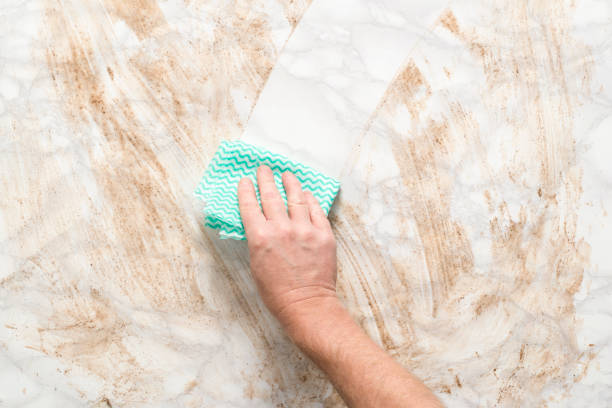
Cleaning marble requires special care to preserve its natural beauty and prevent damage. Here are some top tips to keep in mind when cleaning marble surfaces. Firstly, avoid using harsh or acidic cleaners on marble as they can etch and dull the surface. Instead, opt for gentle and pH-neutral cleaners specifically formulated for marble.
Mix a small amount of the cleaner with water and use a soft cloth or mop to clean the marble surface. Remember to always follow the instructions on the cleaner and avoid using excessive amounts of water, as marble is porous and can absorb moisture.
Secondly, it’s essential to promptly clean up spills on marble to prevent staining. Wipe up any liquid spills immediately with a soft cloth or paper towel. Avoid rubbing the spill, as it can spread and deepen the stain. For stubborn stains, you can use a mild soap solution or a poultice made of baking soda and water. Apply the poultice to the stained area, cover it with plastic wrap, and allow it to sit overnight.
Rinse the area with water and gently pat it dry. If the stain persists, it may require professional attention. Regularly sealing your marble surfaces can also provide an extra layer of protection against stains and damage, so be sure to follow the manufacturer’s recommendations for sealing frequency. With these top tips, you can effectively clean and maintain the beauty of your marble surfaces for years to come.
Cleaning Specific Marble Surfaces
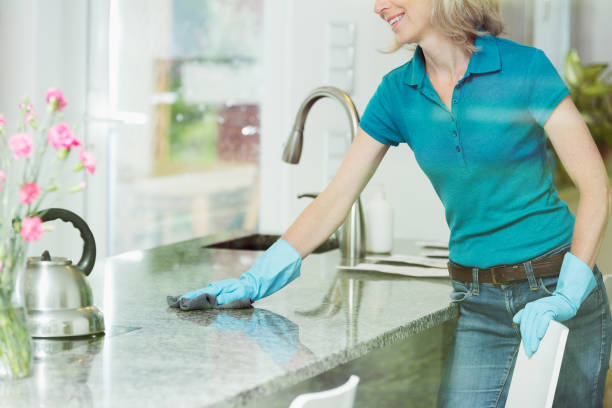
Cleaning specific marble surfaces requires targeted approaches to ensure optimal results while preserving the integrity of the stone. When it comes to cleaning marble countertops, start by wiping away any crumbs or loose debris with a soft cloth or sponge.
Then, dampen a cloth or sponge with a gentle marble cleaner or a mixture of mild dish soap and warm water. Wipe the surface in gentle, circular motions, paying attention to any spills or stains. Rinse the cloth or sponge frequently and change the water as needed. Once cleaned, dry the countertop thoroughly with a soft towel to prevent water spots or streaks.
For cleaning marble floors, begin by dry mopping or sweeping to remove loose dirt and debris. Next, use a mop or soft cloth dampened with a marble cleaner specifically formulated for floors. Avoid saturating the floor with water to prevent excess moisture from seeping into the marble. Wipe the floor in small sections, ensuring to rinse and wring out the mop or cloth regularly.
For stubborn stains or grime, a soft-bristle brush can be used, but avoid using abrasive tools or harsh cleaners that can scratch or damage the marble surface. After cleaning, allow the whole marble floor either to air dry or use a soft towel to gently dry it, ensuring no water spots are left behind. Regular maintenance, such as sweeping or dry mopping, can help prevent dirt buildup and minimize the need for deep cleaning.
Keep that natural stone looking its best with proper protection and care
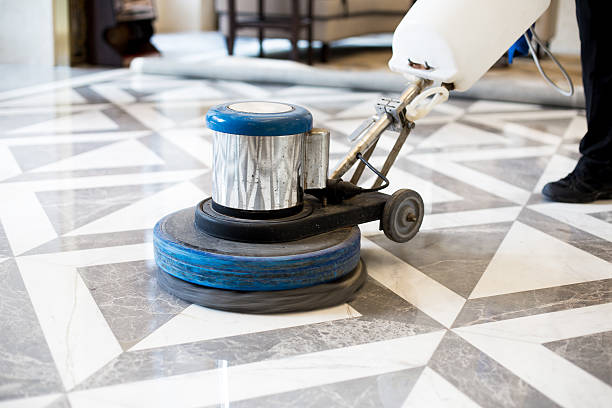
To keep natural stone, such as marble, looking its best, it is crucial to provide proper protection and care. One essential step is to seal the marble surfaces regularly. Marble is porous and can easily absorb liquids, leading to stains and damage. Applying a high-quality sealer helps create a protective barrier that repels spills and prevents penetration into the stone.
Follow the manufacturer’s instructions for the recommended frequency of sealing based on the type of marble and its level of use. Regularly inspect the sealer’s effectiveness by testing water droplets on the surface. If the water beads up, the seal is intact. If it absorbs into the marble, it’s time to reseal.
In addition to sealing, it’s important to practice preventative measures to protect natural stone surfaces. Use coasters or placemats under glasses, bottles, and hot dishes to prevent contact with the marble. Avoid placing acidic or abrasive substances directly on the surface as they can etch or scratch the stone. Use cutting boards when preparing food and avoid using harsh cleaning tools or abrasive cleaners that can damage the surface.
Regularly dust or wipe down the marble surfaces with a soft, microfiber cloth to remove dirt and debris that can cause scratches and nicks. By implementing these protective measures and providing proper care, you can help maintain the beauty and longevity of your natural stone, ensuring it continues to look its best for years to come.
What is the best thing to clean marble?

When it comes to cleaning marble, it is crucial to use gentle and non-abrasive cleaners to preserve the stone’s natural beauty. One of the best options for cleaning marble is to use a pH-neutral cleaner specifically formulated for marble surfaces.
These cleaners are designed to effectively remove dirt, grime, and stains scratch marble without causing any damage or dulling the stone. They are readily available in the market and can be used for regular maintenance cleaning.
Another excellent option for cleaning marble is to create a homemade solution using mild dish soap and warm water. Mix a few drops of mild dish soap with warm water in a bucket or spray bottle. Dampen a soft cloth or sponge with the soapy solution and gently wipe the marble surface, ensuring not to use excessive water.
Rinse the cloth or sponge frequently and change the water as needed to avoid spreading dirt or residue. After cleaning, thoroughly dry the marble with a soft towel to prevent water spots or streaks. This gentle homemade solution is cost-effective and safe for regular use on marble surfaces.
What products to use

It’s essential to use products that are specifically designed for this delicate stone. Opt for pH-neutral cleaners that are formulated for marble surfaces. These cleaners are gentle yet effective in removing dirt, grime, and stains without causing any damage or discoloration.
Look for products that are labeled as safe for use on marble and follow the manufacturer’s instructions for the best results. Many of these cleaners are readily available in the market and come in various forms such as sprays, concentrates, or wipes, offering convenience and ease of use.
In addition to pH-neutral cleaners, there are some natural alternatives that can be used to clean marble. One option is to create a homemade cleaning solution using mild dish soap and warm water. Mix a few drops of mild dish soap into a bucket of warm water and use a soft cloth or sponge dampened with the solution to gently clean the marble surface.
Another natural option is using a mixture of baking soda and water to create a paste. Apply the paste to any stubborn stains or grime, and let it sit for a few minutes before gently scrubbing and rinsing it off. These natural alternatives are cost-effective and can be used as a safe and effective option for cleaning marble. However, always perform a patch test in a discreet area before applying any new cleaning product or method to ensure compatibility with your specific marble surface.
How to Clean Marble Countertops
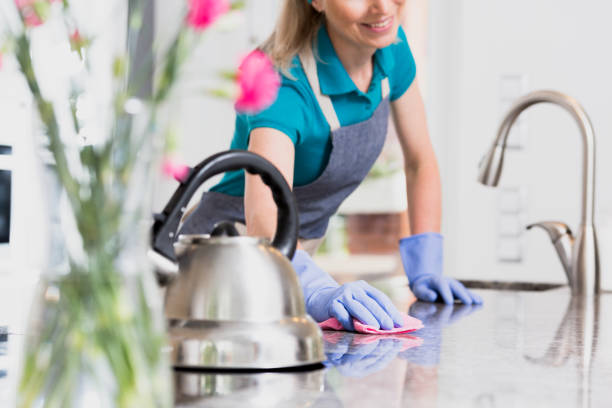
Start by removing any loose crumbs or debris from the surface using a soft cloth or sponge. Next, prepare a gentle cleaning solution by mixing warm water with a pH-neutral marble cleaner. Dip a soft cloth or sponge into the solution, ensuring it is damp but not soaked.
Wipe the countertop surface in gentle, circular motions, paying extra attention to any spills or stains. Avoid using abrasive scrub brushes or harsh cleaning tools that can scratch the marble. Rinse the cloth or sponge frequently and change the water as needed to prevent spreading dirt or residue.
Once you have cleaned the marble countertop, rinse it thoroughly with clean water to remove any remaining cleaning solution. Then, use a soft, dry cloth or towel to gently pat the surface dry. This will help prevent water spots and streaks from forming.
Avoid air-drying the marble, as it can lead to water marks or mineral deposits. To maintain the shine and luster of the marble, you can use a marble polish or a microfiber cloth to gently buff the surface in circular motions
How to clean marble surfaces
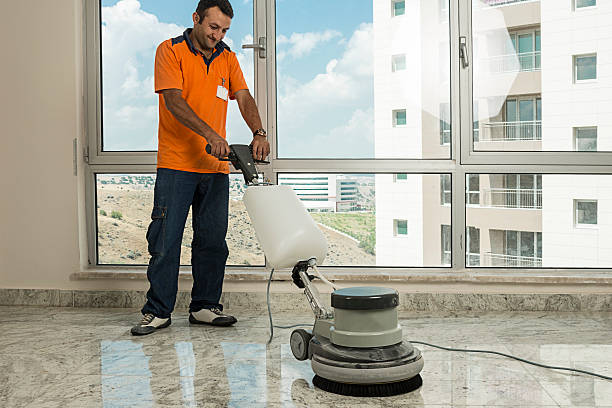
Start by removing loose dirt and debris from the surface by using a soft brush or a microfiber cloth. This step helps prevent scratching when cleaning the marble. Next, prepare a cleaning solution by mixing warm water with a pH-neutral marble cleaner or a few drops of mild dish soap. Dip a soft, clean microfiber cloth, or sponge into the solution, ensuring it is damp but not dripping. Gently wipe the marble surface, focusing on any stains or areas that require extra attention. Avoid using abrasive scrub brushes or harsh chemicals that can etch or damage the marble.
After cleaning, rinse the cloth or sponge frequently to prevent spreading dirt or residue. Once you have cleaned the marble surface, rinse it thoroughly with clean water to remove any remaining cleaning solution. Use a soft, dry cloth or towel to gently pat the surface dry, ensuring no water spots or streaks are left behind.
Use hot distilled water
Distilled water is free from impurities and minerals that can potentially leave behind residue or water spots on the marble. Heat up the distilled water to a comfortably warm temperature, but not boiling hot, as extreme temperatures can cause thermal shock to the marble. The warmth of the water helps to loosen dirt and grime, making it easier to clean.
To use hot distilled water, dampen a soft cloth or sponge with the warm water and gently wipe the marble surface. The warmth of the water helps to dissolve and lift away dirt and stains. For more stubborn stains, you can soak a cloth in the hot distilled water and place it on the affected area for a few minutes to allow the heat and moisture to work on the stain.
Afterward, gently scrub the area with the damp cloth or sponge to further clean the surface. Remember to rinse the wet cloth or sponge frequently and change the water as needed to prevent spreading dirt or residue. Using hot distilled water is a simple yet effective method to clean marble surfaces while minimizing the use of chemicals and ensuring the preservation of the marble’s natural beauty.
Removing Stains from Marble
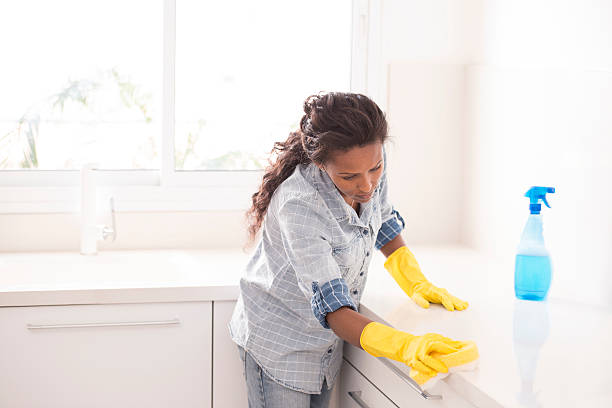
The approach to stain removal depends on the type of stain and the severity. For organic stains such as food, beverages, or pet stains, begin by gently blotting the stain with a clean, white cloth or paper towel to absorb as much of the stain as possible. Avoid rubbing the stain, as this can push it deeper into the marble.
Next, create a poultice using a mixture of baking soda and water or a commercial marble stain remover. Apply the poultice to the stained area, ensuring it is slightly thicker than the stain itself, and cover it with plastic wrap. Allow the poultice to sit for a specified time recommended by the manufacturer or until it dries completely. Then, gently remove the poultice, rinse the area with water, and dry it with a soft cloth.
For oil-based stains such as grease or makeup, start by absorbing excess oil with a clean cloth or paper towel. Avoid using water or water-based solutions initially, as they can cause the oil to spread and penetrate further into the marble. Instead, apply a poultice made of baking soda and acetone or a commercial marble degreaser. Follow the instructions on the product or mix the ingredients to create a paste-like consistency.
Apply the poultice to the stained area, covering it with plastic wrap, and allow it to sit for the recommended time. Then, remove the poultice, rinse the area with water, and dry it thoroughly. If the stain persists, repeat the process or consider seeking professional assistance







